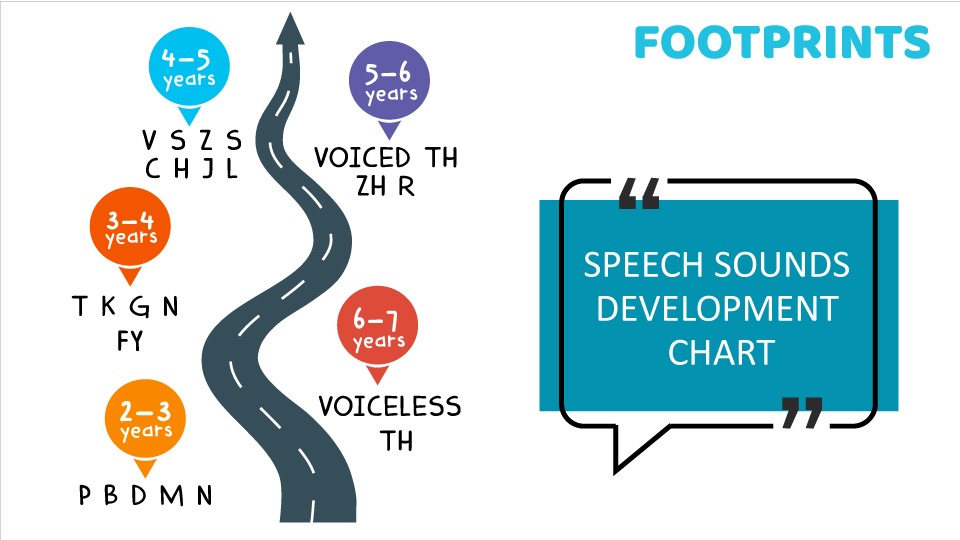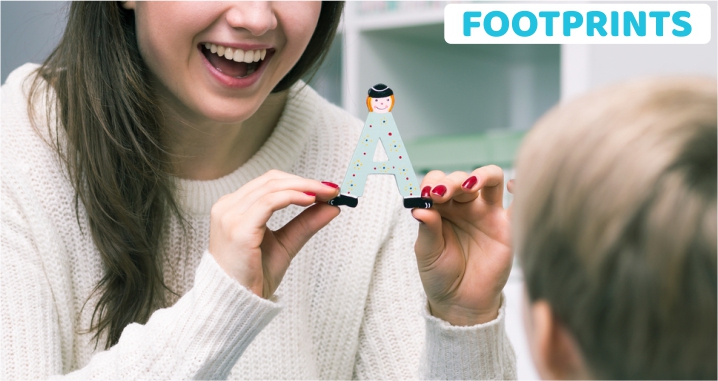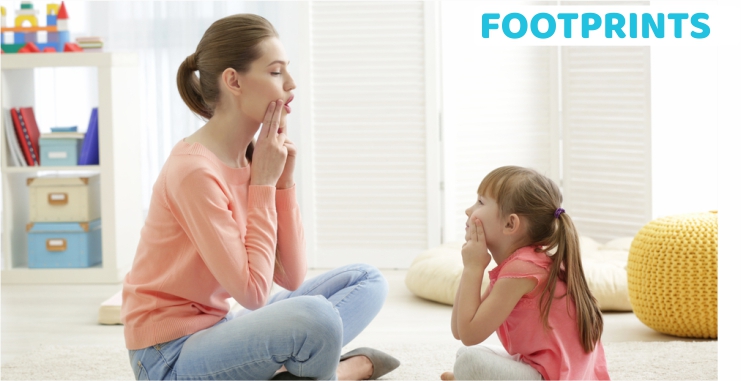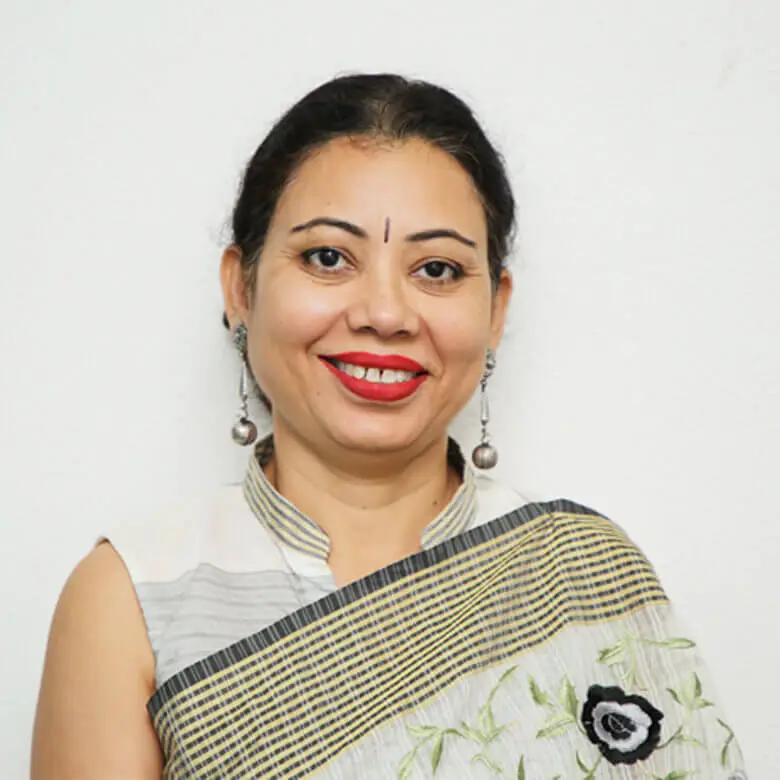

Children get up sound pronunciation by hearing the adults in their environment talk in the same manner that they pick up the language. Usually, sounds are taught in a specific order, with some sounds (like “p” and “b”) being learned earlier and others (like “th” and “r”) being discovered later.
Additionally, common among very young infants is their tendency to mispronounce things; for instance, they might say “wat” for “rat” and “tum” for “thumb.” However, as kids become older, they ought to pronounce should with greater accuracy. Because the sounds are so similar, speech therapies for the F and V sounds can frequently be combined. One has a voice (V), while the other does not (F).
A child achieves several developmental milestones when it comes to speech sound. This includes articulation, which refers to both the production of sound and its clarity. Here is a handy guide on the various developmental milestones children typically achieve at specific ages.
Speech-sound by age chart
0-6 Months
In this age bracket, the baby starts making cooing sounds. Another thing that you will notice is that if you make a loud sound, the child turns toward the source of the sound. You will also see the child making eye contact if you make a sound or start speaking to the child.
In case these speech sound development milestones aren’t met, there can be two likely fallouts:
- It can affect the child’s oral muscle tone.
- It impacts the child’s social interaction with his caregivers.
6-12 Months
The child’s babbling is sweet to the ears during this age range. They also begin to repeat some small words after you. You enjoy the child saying “Mamama” or “Papapa.”
As in the previous age range, the fallouts of the child not achieving these milestones are:
- It can affect the child’s oral muscle tone.
- It impacts the child’s social interaction with his caregivers.
- It impacts the child’s ability to sequence sounds together.
1-2 Years
During this period, the child picks up several sounds & can produce the following sounds – p/, /b/, /m/, /n/, /t/, /d/.
You could notice several errors though, such as:
- “Car” becoming “gar” or “sea” becoming “tea.”
- You could also witness them missing the end of a word.
- You could witness a “sh” sound being replaced by a “s” sound in what is known as palatal fronting.
- Similarly, “key” could become” tea” in velar fronting.
- They could also resort to the deletion of weak syllables in words.
- They could also remove certain consonants in words.
- They could also resort to De-affrication, where the affricate sounds ‘sh’, ‘ch’, and ‘j’ are replaced with fricative sounds.
- Or there could be gliding where the /l/ and the /r/ sounds are replaced with the /w/ or the ‘y’ sound.
The fallouts of not meeting these speech milestones could primarily lead to:
- Anger and frustration in the child since he or she will struggle to make themselves understood.
- Fluency and clarity of speech are affected.
2-3 years
In this age bracket, the child can produce the following sounds- /p/, /b/, /m/, /n/, /t/, /d/
Common errors currently include:
- Sounds made with no voice are replaced with voiced sounds.
- Sounds made with a long airflow are replaced by sounds made with a stopped airflow.
- Children often delete the final consonant in words.
- They resort to Velar Fronting and Palatal Fronting.
- Weak syllables in words are often deleted.
- Sometimes consonant clusters are reduced.
- There is de-affrication.
The fallouts of not achieving these milestones, as in the previous age bracket, include:
- Anger and frustration in the child since he or she will struggle to make themselves understood.
- Fluency and clarity of speech are affected.

3-4 years
- The child can produce the following sounds- p/, /b/, /m/, /n/, /t/, /d/, /k/, /g/, /f/, /s/, /y/, /h/
- People who do not know the child well may still have trouble understanding the child fully.
Common errors include:
- There could be the deletion of weak syllables in words.
- The child could reduce some consonants.
- There could be de-affrication.
- The l and r sounds could be replaced by w or y sounds.
Fallout of not achieving these milestones include:
- It impacts socialization.
- Affects fluency and clarity of speech.
- Frustration at not being understood by others.
4-5 years
In this age bracket, the child can produce the following sounds:
/p/, /b/, /m/, /n/, /t/, /d/, /k/, /g/, /f/,
/s/, /y/, /h/, ‘sh’, ‘ch’, ‘j’, /z/, /l/, /v/
Common errors include:
- De-affrication of sounds.
- Gliding.
- Replacing the “th” sound with “f” or “v”.
Fallouts of not meeting developmental milestones lead to:
- Difficulties with socialization.
- It can affect fluency and clarity of speech.
- Frustration and anger at not being understood by others.

5-6 years
In this age bracket, speech is mostly clear and easy to understand.
Errors could include:
- Gliding.
- Replacing the “th” sound with “f” or “v”.
Fallouts of not achieving these developmental milestones can include:
- Difficulties with socialization.
- It can affect fluency and clarity of speech.
- Difficulties with spelling.
To Sum Up
The following details can be helpful when screening developmental speech issues based on the age group. It is essential, however, to remember that this speech-sound development chart should be used as a broad indicator and not be used to self-assess. If any issues are suspected with the child’s speech development, it is advisable to visit a professional who can conduct a thorough assessment and help with further steps. Remembering that the child could suffer speech or language delays is also important. While a language delay means that the child speaks words well but can’t put them together, a child with a speech delay may be hard to understand.
A Speech Language Therapist, or SLP, as they are popularly referred to, will check the child’s speech & language skills. They will check for the child’s receptive language, expressive language, sound development and clarity of speech, oral-motor status, and more.
While the therapist will work with the child to improve speech and language skills, parents can help by seemingly small steps such as focusing on communication with the child. Reading to the child and using everyday situations to talk to them will help them build on speech and language. Simple things like explaining what you are doing in your daily routine, pointing out objects at home and outside, describing their toys, and naming foods at the grocery store can all come in handy. Pro tip- While it may be tempting to undertake “baby talk” or baby language sounds with the child, it is best avoided. Pay attention to using the correct names of objects, etc., so the child learns the correct pronunciations.
For more such informative blogs, keep watching this space. At Footprints Preschool, a chain of play schools and daycares, we are committed to informing you of valuable facts about your child’s growth and development.

Amita is an experienced educator with over 30 years of experience. She has an outstanding understanding of child development, having worked with various age groups for prestigious businesses. She has been dedicated to handling Footprints’s Curriculum and Delivery department for the past decade. Amita’s credentials include being one of India’s few HighScope Curriculum certified trainers and volunteering as a course leader for Landmark Education, the world’s largest training firm.

